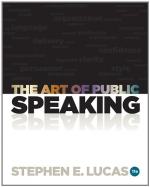“Aye, Joe, and I knew him well, too! He lived next door to me, five flights back. He leaves a widowed mother and two wee bits of orphans. I helped him bury his wife a fortnight ago. Ah, Joe! but it’s hard lines for the orphans.”
A ghastly hour moves on, dragging
its regiment of panic in its
trail and leaving crimson
blotches of cruelty along the path of
night.
“Are they all out, firemen?”
“Aye, aye, sir!”
“No, they’re not! There’s a woman in the top window holding a child in her arms—over yonder in the right-hand corner! The ladders, there! A hundred pounds to the man who makes the rescue!”
A dozen start. One man
more supple than the others, and reckless
in his bravery, clambers to
the top rung of the ladder.
“Too short!” he cries. “Hoist another!”
Up it goes. He mounts
to the window, fastens the rope, lashes
mother and babe, swings them
off into ugly emptiness, and lets
them down to be rescued by
his comrades.
“Bravo, fireman!” shouts the crowd.
A crash breaks through the uproar of crackling timbers.
“Look alive, up there! Great God! The roof has fallen!”
The walls sway, rock, and tumble in with a deafening roar. The spectators cease to breathe. The cold truth reveals itself. The fireman has been carried into the seething furnace. An old woman, bent with the weight of age, rushes through the fire line, shrieking, raving, and wringing her hands and opening her heart of grief.
“Poor John! He was all I had! And a brave lad he was, too! But he’s gone now. He lost his own life in savin’ two more, and now—now he’s there, away in there!” she repeats, pointing to the cruel oven.
The engines do their work.
The flames die out. An eerie gloom
hangs over the ruins like
a formidable, blackened pall.
And the noon of night is passed.
—ARDENNES JONES-FOSTER.
QUESTIONS AND ANSWERS
1. Write two paragraphs on one of these: the race horse, the motor boat, golfing, tennis; let the first be pure exposition and the second pure description.
2. Select your own theme and do the same in two short extemporaneous speeches.
3. Deliver a short original address in the over-ornamented style.
4. (a) Point out its defects; (b) recast it in a more effective style; (c) show how the one surpasses the other.
5. Make a list of ten subjects which lend themselves to description in the style you prefer.
6. Deliver a two-minute speech on any one of them, using chiefly, but not solely, description.
7. For one minute, look at any object, scene, action, picture, or person you choose, take two minutes to arrange your thoughts, and then deliver a short description—all without making written notes.




